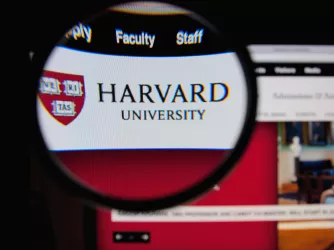Table of Contents
REPORT: Artists clash with campus censors

- Art purged for being “one-sided,” among other excuses
- Censors, often not understanding the message, ban art rather than grapple with its meaning
PHILADELPHIA, July 10, 2018 — Art censorship is nothing new. Spanish conquistadors smashed ceramics of ancient Peruvian cultures that portrayed gay and lesbian sex. The Roman Catholic Church of the 15th century was so intent on covering up penises that for decades even Michelangelo’s David wore a garland of leaves around his waist. But a new report from the Foundation for Individual Rights in Education shows that art censorship remains alive and well, even on today’s college campuses, where administrators are still painting the proverbial fig leaf over art they find objectionable.
“One Man’s Vulgarity” paints a picture of just how far campus censors are willing to go to stifle artistic freedom instead of grappling with a work’s meaning. Among the excuses for censorship mentioned in the report: the art was “too controversial,” “one-sided,” not “respectful and sensitive” enough, or not “conducive to the creative atmosphere.”
SEE THE ART ADMINISTRATORS CENSORED
“Administrators insult both the artist and the campus community when they censor artistic expression,” said Sarah McLaughlin, FIRE senior program officer and author of the report. “No person should appoint themself the sole authority over which art is worth seeing, and who should be allowed to see it.”
The art covered in the report represents a broad swath of viewpoints and perspectives; the only common thread is the censorship their messages provoked. Since 2016 alone:
- A university in Massachusetts temporarily closed an art exhibit because images of the Ku Klux Klan and Jews arrested during World War II — intended to emphasize the connections the artist saw between President Donald Trump’s campaign rhetoric and historical efforts to oppress minority groups — caused “distress.” The school later put one of the images behind drapes and apologized if the art inspired “strong emotions” for some who viewed it.
- A South Carolina university charged a student with disorderly conduct and threatened expulsion for an anti-lynching display that the university said was “contrary to [its] values,” prompting FIRE to write to the university and ensure the charges were overturned.
- A college in Florida refused to display a professor’s anti-Trump artwork because it was “too controversial.”
- A California university shut down an anti-racism play about how the construct of race affects the performers’ lives because the satirical production “wasn’t achieving the goal of constructing a dialogue.”
The report notes that after pushback from FIRE and others, some universities restored the artwork and others displayed a modified version. However, in many cases the art was purged completely, and thoughtful discussion was traded for empty frames and closed curtains.
“Instead of encouraging lively dialogue, too many colleges choose to rob students of the opportunity to look at a subject with a new perspective, while reinforcing the idea that challenging ideas are unwelcome,” said McLaughlin. “Colleges should think twice before choosing sterilization over education.”
MORE ON CENSORSHIP: AMERICA’S BANNED BOOKS
The Foundation for Individual Rights in Education (FIRE) is a nonpartisan, nonprofit organization dedicated to defending and sustaining the individual rights of students and faculty members at America’s colleges and universities. These rights include freedom of speech, freedom of association, due process, legal equality, religious liberty, and sanctity of conscience — the essential qualities of liberty.
CONTACT:
Daniel Burnett, Communications Manager, FIRE: 215-717-3473; media@thefire.org
- Free Speech
- Art Censorship
- Faculty Rights
- Freedom of Conscience
- University of Iowa
- Salem State University
- Winthrop University
- Gainesville State College
- University of New Hampshire
- Polk State College
- Brandeis University
- Kennesaw State University
- University of Wisconsin - Stout
- Southwestern College
- University of Southern Maine
- California State University - Long Beach
- Tarleton State University
- Washington State University
- University of Iowa: Art Professor’s Controversial Display Removed After Student Complaints
- Winthrop University: Student Faced With Spurious Charges, Threats of Expulsion or Suspension for Anti-Lynching Art Installation
- Gainesville State College: President Censors Faculty Art Critical of Confederate Heritage
- University of New Hampshire: Student-Created Display on ‘Street Harassment’ Removed
- Polk State College: Professor’s Provocative Political Artwork Barred from Faculty Art Exhibition
- Pennsylvania State University - University Park: Student Sues for Art Censorship
- Brandeis University: Cancellation of Lenny Bruce-inspired play
- University of Wisconsin - Stout: Censorship, Referral to Threat Assessment Team, and Threat of Criminal Charges after Professor Puts Posters Outside Office Door
- California State University, Long Beach: Censorship of Play Satirizing Racial Stereotypes
- Washington State University: Administrative Support for Heckler's Veto of Student Play
Recent Articles
FIRE’s award-winning Newsdesk covers the free speech news you need to stay informed.

‘I hate freedom of opinion’ meme leads to sentencing in German court

Revoking Harvard’s tax-exempt status will threaten all nonprofits

Grandpa’s advice for the new wave of American censors
